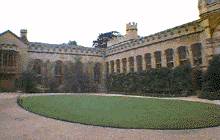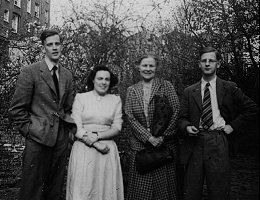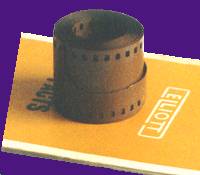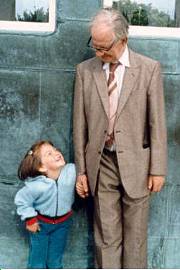

Patrick Shackleton (Pat) was born in Java of English parents on May 13 1926. He liked to recall that 1926 was the year of the General Strike, which (he believed) set him off on a road to controversy down which he travelled for the rest of his life. Patrick's father Charles was director of a rubber trading company, and while Pat was still a baby the family left Java for Shanghai where the company had its Head Office. They travelled via Singapore where they stayed at the famous Raffles Hotel, then visited some rubber plantations managed by Charles near Penang in the Federated Malay States, finally reaching Shanghai in 1927.
The political situation in Shanghai was dire as a result of the Chinese Civil War, a particularly barbaric example of which being the 'Shanghai Massacre' organised by Chiang Kai Shek which took place just before the Shackletons arrived. One of Pat's earliest memories was of hordes of defeated Chinese soldiers in the narrow streets of the town, each with a battered kettle tied to his waist.
Patrick's older brothers John and James went to the Cathedral Boys' school in Shanghai until 1931, when their mother Rose took them to England on the boat to start at Clifton College (near Bristol). Patrick and his father were unable to go with them because of the Depression and the political situation, which required Charles's personal attention, and they found an Amah to look after Patrick. She was called Gui Ping, and Pat became very attached to her.
The next political crisis was the so-called 'Shanghai incident' when the Japanese landed four divisions of troops in January 1932. The Chinese resisted very effectively, and despite reducing large areas of Shanghai to rubble with their bombardment, the Japanese were forced to withdraw. Patrick's mother returned from England shortly after this incident, and the situation remained largely stable until 1937, when the Japanese invaded again. Patrick remained in Shanghai until it was his turn to sail back to England with his mother to start at Clifton in 1934, so he missed the 1937 invasion, but Patrick's father remained in Shanghai until he retired in 1939. This proved to be excellent timing, as the Japanese did not start interning Westerners until after Pearl Harbour.
By 1940 Patrick was the only one of the Shackleton boys still at school at Clifton. In June 1940 the school was evacuated because of the Battle of Britain, but reopened again in September. In October the school was bombed, and received two direct hits in an air raid, destroying two houses. The boys were safe in an air raid shelter, but the school could not continue as normal, and relocated to Bude on the North Cornwall coast. Interestingly, the American General Omar Bradley later moved into the bombed Clifton school buildings, and used them as his headquarters before D-Day.
The new school at Bude was cramped compared with Clifton, and several teachers did not make the move, so the syllabus was heavily restricted, with no science for example. This had the effect of turning Patrick more to mathematics, where his outstanding ability soon became apparent. In an essay written for the Headmaster when he was fifteen, Patrick disagreed with people who disliked mathematics because it was abstract and therefore "inhuman", and he went on to say that this was "surely an argument in favour of learning mathematics, considering the state of the human race at the moment" (November 12th 1941). The Headmaster did not accept Patrick's reasoning ...
With eighteen months still to go before he was due to finish at Bude Patrick's parents' investments took a downturn, so Patrick applied for a scholarship. He won this with his usual flair and was able to continue his studies at Bude uninterrupted, to such good effect that he won the Domus Scholarship to study mathematics at Balliol college, Oxford in 1943. Patrick did not to go up to Oxford until 1948 because of his Army service.
Patrick was called up in 1944 as an Engineer Cadet, and curiously enough the first thing the Army did was to send him to St John's College, Cambridge for his Officer training. This lasted until 1945, when he joined the Royal Engineers.
During his training, Cadet Shackleton 14495113 was asked to write an essay about the army. In it he wrote,
"I think the whole attitude permeating the Army is wrong. For instance, the army system of justice is medieval as is the whole spirit behind King's Regulations..... That the only crime in the Army is being found out is often voiced with complaisance instead of the indignation it should provoke."
Patrick then went on in that essay to advocate what he called the "heresy" of soldiers' rights. The Army coped with this difficult young man by giving him his Commission as a Second Lieutenant, Royal Engineers, in 1946, and sending him to Germany to join the British Army on the Rhine. He was Garrison Engineer at the British Army base in Minden, North Germany, where he was responsible for engineering and building works until 1948.
Patrick made use of his time in the army to learn German, and this enabled him to communicate with the locals, unlike most of the other British soldiers. Patrick told Richard Hillier the story of how he used his German contacts to acquire a BMW motor car, which was the envy of his friends. He kept the car well hidden, but unfortunately it was spotted near the base one day by a senior officer, and it was immediately requisitioned. Patrick's opinion of Army authority dropped further after this incident.
When he was based in Minden, Patrick met a German girl, and became quite fond of her, but it fell through, and in later life he never married. After the incident with the BMW, he had to settle for a motorbike, but he crashed this during the severe winter of 1947 and hurt his leg.
Patrick left the Army as a full Lieutenant in 1948, and finally went up to Oxford in the autumn of that year to take up his Scholarship and read mathematics at Balliol.


Photo by John, Easter 49
Patrick enjoyed his time at Balliol enormously after the rigours of the Army. He had many interesting contemporaries who later became well known, such as Ian Gilmour, Nicholas Ridley, and Dick Taverne, who all had distinguished political careers, as well as John Schlesinger, and Tony Benn's brother David.
Michael Warburg, who read History at Balliol and was later one of the Founder Members of the Company of Information Technologists, has a particularly vivid memory of Patrick on the Oxford and Cambridge skiing trip in 1948. They were travelling overnight to Sestria in Italy, and when the train stopped in the early morning, the sleep-deprived and hungry undergraduates all piled onto the station to have breakfast. When the train was ready to depart, Michael looked out and saw Patrick still seated on the platform eating breakfast. His friends called to him to jump on the train, but Patrick just waved as if to say, "You go on, I'm finishing my breakfast". The train left without him, but he caught up with the others eventually.
Pat's brother John stayed with him at the college one weekend in the Spring of 1951, and recalls being waited on 'like a Lord', with a manservant pouring out the tea! A few weeks later Pat was Best Man at John's wedding to Pauline at Barnes on 12 May 1951, a day short of Pat's twenty-fifth birthday. Patrick told John that he was not expecting a first class degree as he had not worked hard enough, but he did achieve a good second, and went down from Oxford with his Bachelor of Arts degree that same year.
On leaving Oxford, Patrick directed his mathematical and engineering skills to the computer industry, and from then on his life closely follows the history of computing in the UK.
He started his work with computers at British Tabulating Machines (BTM), later to merge with Powers-Samas to form ICT. BTM, also known as Hollerith after its founder, manufactured electro-mechanical tabulators which used punched cards with rectangular holes to store data. The tabulators were "programmed" by plugging a series of jumper cables into a program board. Patrick was struck by the elegance and simplicity of the Hollerith card sorter which could sort a stack of cards on a five digit number in five passes using ten sorting pockets. Ten years later, Patrick was using advanced software techniques to sort nine digit numbers in three passes using the same method. Tabulator technology had been heavily used by the military during the war, but was quickly becoming obsolete with the advent of genuine computers. An early example of these was the LEO 1, on which Patrick briefly worked as a junior team member, but it was the Elliott 405, a scientific machine using thousands of valves, which was to introduce Pat to the world of software.


Gerry Mills recalls that in 1955, Elliotts decided to start selling the 405 commercially from Borehamwood, and they set about recruiting a sales force. Their first salesman was Pat Shackleton, and their second was Gerry Mills. The 405 sold well, and was acknowledged as the first British business computer, but it soon became clear that Patrick's strength was not in sales, but was on the technical side. He became involved in writing the software for the machine, and soon realised that most business programs required a method of sorting, and he wrote the first of many software sort routines for the Elliott 405.
Patrick and Gerry Mills then led the team which developed the Elliott 503, an advanced transistorised computer which used a 39 bit word for scientific work. The Elliott 803 was a closely related computer designed for commercial work, and Patrick became heavily involved in the software for this new range of machines.
The 405 had been programmed in machine code, but Patrick and the rest of the Borehamwood team realised that for commercial work on the 803, a high level language was needed, and they decided to adopt the new ALGOL programming language currently being defined. Patrick joined the ALGOL 60 committee, attending some of the international meetings in Germany as the British representative. Patrick largely succeeded with his priorities to make ALGOL an elegant as well as a powerful language, but he failed to get input/output included in the first specification.
With ALGOL 60 available on the 803, Patrick was able to contemplate much more ambitious business projects, and he led the large team of programmers which developed the landmark Stock Control system for Littlewoods.
Patrick inspired many of the programmers he led at Elliot's. Here Professor C.A.R.Hoare of Oxford recalls the genesis of Quicksort in his 1980 Turing Award Lecture:
"I start my story in August 1960, when I became a programmer with a small computer manufacturer, a division of Elliott Brothers. My first task was to implement, for the new Elliott 803 computer, a library subroutine for a new fast method of internal sorting just invented by Shell. My boss and tutor, Pat Shackleton, was very pleased with my completed program. I then said timidly that I thought I had invented a sorting method that would usually run faster than SHELLSORT, without taking much extra store. Patrick bet me sixpence that I had not. Although my method was very difficult to explain, Patrick finally agreed that I had won my bet."
Tony Hoare's wife Jill was the Elliott 405 machine code librarian at Borehamwood. She recalls that Pat was the main contributor to the library and she was much impressed by the excellence of his work. He was very surprised and pleased when she told him so.
Martin Randall, another colleague from Borehamwood, remembers the Elliott 803 as a somewhat unreliable machine, which nevertheless ran 24 hours a day, with the constant attention of three engineers working 8 hour shifts. Sometimes the machine would behave inconsistently and the engineer would take out his board hammer, and gently tap the boards to reseat them, which usually fixed the problem. Patrick was called in once when a payroll program written by Martin occasionally paid people twice. The program used a poly-phase magnetic tape sort routine written by Patrick, who said "It can't be my sort routine, it must be your program!" Martin checked his program and finally convinced Pat that the problem was elsewhere, and in the end they discovered that the magnetic tape unit was duplicating blocks.
Patrick had found his natural home at Elliotts, where the work exactly suited his eccentric personality, and his brilliant mind and frayed cuffs are remembered by everybody who was there. It couldn't last. In 1962 the company was reorganised, and Gerry Mills decided to leave, taking with him Patrick as co-director of the new Mills Associates, which set up in offices at London Wall.
Patrick's first major project with the new company was to write the software for the ground breaking Unit Trust Service, which was so successful that it was spun off with Patrick looking after the technical side in London, while Gerry went off to Monmouth in Wales.
Patrick then set up his own company, Dataco, backed by the venture capitalist ICFC. This was initially very successful with several major projects, including work on the Atlas supercomputer at London University programming in FORTRAN, and work for Plessey, Philips and Nixdorf. Unfortunately cashflow was poor, and Dataco was wound down, but Pat continued with these projects as a consultant.
In 1969, Patrick wrote a specification for a new Symbolic Assembly Language (SAL) for the Philips P350 Visual Record Computer, and as a result of this he was commissioned to write a compiler for this language. Until that point, it was only possible to program VRC computers in basic assembler. The new language was written on punched cards, and compiled on an IBM 360, and produced P350 machine code as output. Patrick's involvement continued until 1971, with modifications for the new P359 computer, by which time the language had changed its name to Systems Oriented Language (SOL).
Dana Wilson worked with Patrick on this project, and recalls that internally within Philips 'SOL' was known as Shackleton's Own Language. It was a arguably a precursor to PASCAL, which became very popular with developers, not altogether surprisingly in that it built on Patrick's two decades of software experience. It was the true successor to ALGOL 60, the monumental ALGOL 68 proving to be a dead end.
In 1972 Patrick joined a team of like-minded computer specialists at Advanced Information Access (AIA) in London to invent the Business Mini-computer. The ability to communicate live business information direct to a terminal on a user's desk was at the time revolutionary.
The new system was called ADAM, and was demonstrated at the Business Efficiency Exhibition at Olympia in December 1972, leading to several immediate sales. Pat's contribution was in the data access techniques, and a major breakthrough was the use of hash keys to find data by random access. Pat solved all the practical problems in what was believed to be the first commercial application of this technique, and his basic algorithm is still in use today.
The next problem was sorting the large amount of information computers were starting to accumulate: a typical time to sort 150,000 items was 24 hours! Using ideas developed with Tony Hoare ten years earlier, Patrick wrote his version of the Quick Sort routine, which broke the problem down into small chunks which could be processed in memory, thereby bringing sort times down to twenty minutes or less.
In 1976 ADAM was ported onto the DEC PDP-11, the best selling mini-computer of all time. Patrick wrote all the code in assembler, and Dana Wilson and Bryan Morwood made it work. Bryan recalls that Pat's code was brilliant, but seemed to have a consistent error pattern. For example, most loops ended 1 cycle too early, because Pat would write BLO (branch if low) rather than BLE (branch if less than or equal). Dana noticed that Pat's comments in the code were always right, even when the code itself was wrong, and using this rule they were soon able to remove the errors.
In the 1980's, the increasing sophistication of business applications required money figures to be stored in fields greater than the 32 bits allowed by the hardware. Bryan asked Patrick to develop a set of 64 bit arithmetic routines that would run on a 32 bit computer.
When Patrick delivered his routines three months later, Bryan was stunned to find an implemetation of floating point. When asked why, Patrick said that that was what the Elliott 803 had used, so it was obviously the right design! Several applications were written using Pat's float modules, but finally the programmers rebelled, and Pat was persuaded to rework them as pure 64 bit integer. This superb achievement involved writing assembler code where the intermediate result in a multiply/divide could be 128 bits. No commercial application has yet tested the limits of these 64 bit arithmetic routines.

Mike's daughter
Note Pat's suit!
When Mike Rebay took over the role of guiding Patrick on the ADAM project, Pat had not taken a holiday for some time. Mike was going to Zermatt for a skiing holiday, and Pat asked if he could go too, as he hadn't been skiing since 1948. On the way by air and train, Pat brawled with everybody, including the conductor on the train from Zurich who refused to understand Pat's German, but finally they stood on top of the mountain ready to go. Mike was checking the bindings on his hired skiis when he was horrified to see Pat shoot down the mountain looking like an accident about to happen. Mike set off after him, and the inevitable happened: at the first turn, Mike stepped out of a loose binding, fell, and cracked a rib, thereby terminating his skiing for the week. Pat carried on without a scratch.
Pat spent the whole week looking as though he was about to kill somebody, and lecturing the instructors on how to teach skiing. He had a great time. The coup de grace came on the way back to London; after they had left the train at Zurich Pat got back on, sure he had left something behind. He hadn't, but as a result he and Mike missed the flight to London, thus enabling Pat to state with glee, "I told you you can't trust aeroplanes!"
While working for AIA, Pat filled in his spare time by writing a Business Simulation game for Hatfield Polytechnic. The success of this game caused Patrick to set up Understanding, co-founded with Martin Mitchell and AIA, to exploit the technique on the first personal computers.
Patrick was an early member of the British Computer Society, and was one of its first elected Fellows. He had many entertaining discussions with Alex d'Agapayeff, the President, on subjects ranging from the use of the GO TO statement in programming to whether computer science should admit the existence of input/output or not, something that has been argued about ever since the days of ALGOL 60.
Following the PC revolution, Patrick decided Microsoft had morphed into Satan, the embodiment of evil and temptation, etc, etc. It seems Pat held Microsoft personally responsible 'for the reduction in software standards during the 1980s'. Microsoft's major sin was to not understand the neccessity for garbage collecting of defunct data variables in their Basic language compilers! As an aside, one of the big changes introduced by Microsoft.Net in 2000 was proper garbage collection of variables that went out of scope ... Despite being Satan's work, Patrick enthusiatically adopted Microsoft's C compiler and it became his key software facility for many years. These extreme positions were always present with Pat but his arguments were cogent and always worth listening to.
In the 1990s Patrick returned to the study of the German language, as if the complexities of programming syntax were not enough, but it was the syntax of German that particularly fascinated him.
His last trip abroad was a cruise down the Rhine in the autumn of 1994, arranged by his colleague Mike Rebay to help Patrick recuperate from an aneurism earlier in the year. Despite his knowledge of all things German Patrick still managed to get profoundly lost in Heidelberg and nearly missed the tour boat departure time!
When Patrick died of a stroke at his home in London on the night of 12th November 1996 he had left open on his desk his latest interest, an examination of the high prime numbers of the form 2n - 1.
We were very lucky to have known Patrick.